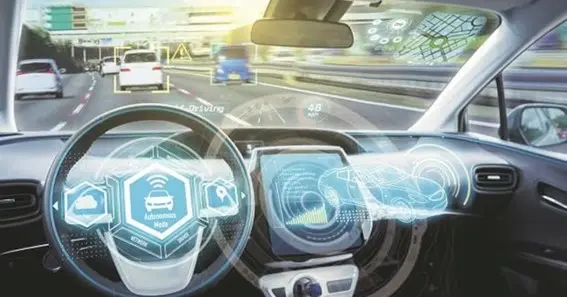As technological innovation is reshaping every aspect of our lives, the world of road safety stands at the forefront of transformative change. The narrative of road safety undergoes a transformative rewrite with the ascent of autonomous vehicles, intelligent infrastructure integration, and advanced collision avoidance systems.
In this article, we will discuss these advancements to explore the promising solutions that have emerged to prevent road accidents.
The Rise of Autonomous Vehicles
The automotive industry is at the forefront of a transformative shift with the rise of autonomous vehicles. These self-driving cars utilize cutting-edge technologies such as artificial intelligence, machine learning, and advanced sensors to navigate roadways.
By eliminating the risk of human error, a significant proportion of accidents caused by factors like distracted driving and fatigue can be mitigated. As companies like Tesla, Waymo, and others invest in research and development, the integration of autonomous features into vehicles is becoming more widespread.
As noted by Reuters, Tesla aims to invest nearly $1 billion in a supercomputer called Dojo this year. The tech is designed to train AI models for autonomous vehicles. Tech like this offers us a glimpse into a future where road accidents are drastically reduced.
Also Read N: Navigating the Markets: Discover Malaysia’s Premier CFD Trading Hubs
Intelligent Infrastructure and Smart Highways
Smart highways, equipped with an array of sensors and communication systems, mark a significant leap in the quest for road safety. These intelligent infrastructures communicate real-time data to drivers, providing crucial information about road conditions, potential hazards, and traffic patterns.
The integration of smart technology enables dynamic traffic management, reducing congestion and, consequently, the likelihood of accidents. As this technology evolves, we can anticipate a more responsive and adaptive road network that actively contributes to accident prevention.
Also Read P: Student Housing in Australia: What You Need to Know
Big Data Analytics for Proactive Safety
The power of big data analytics is harnessed to revolutionize proactive safety measures on our roads. As reported by Analytics Insight, current conversations on road safety and big data emphasize terms like smart cities, V2V communications, and connected infrastructure. Enhancing our roadway infrastructure holds the potential to substantially improve the safety of both drivers and pedestrians.
A notable example is the utilization of programmed stop lights, which optimize traffic flow and decrease the likelihood of accidents. The programming of these lights relies on a combination of video data, mapping, and telematics. This showcases the integral role of big data in advancing road safety initiatives.
By analyzing vast datasets generated by vehicles and traffic systems, authorities can identify patterns and trends associated with accidents.
This insight enables targeted interventions and improvements in areas prone to accidents, creating a proactive approach to road safety. Predictive analytics becomes a tool for anticipating potential hazards and implementing measures to mitigate risks, fostering a safer environment for drivers and pedestrians alike.
Collision Avoidance Systems
Advanced collision avoidance systems represent a critical component in preventing accidents. Leveraging a combination of radar, cameras, and sensors, these systems detect imminent collisions and take automatic corrective actions.
As per Mordor Intelligence, automotive collision avoidance systems aim to prevent imminent crashes by receiving inputs from the surroundings and adjusting accordingly. These systems take charge and execute tasks that can be challenging for drivers in intricate situations.
Employing sensors and cameras, they gather data and process it through controller units. These units then transmit signals to drivers, providing alerts about potential concerns that heighten the risk of collisions and injuries.
Whether through alerting drivers to potential dangers or autonomously applying brakes and steering, collision avoidance systems provide an additional layer of safety. This is particularly useful in situations where human reaction time may fall short. As these technologies mature, their widespread adoption contributes significantly to accident reduction.
Drones and Surveillance for Rapid Response
Unmanned aerial vehicles, or drones, are emerging as invaluable tools for accident prevention and rapid response. Equipped with high-resolution cameras and sensors, drones can swiftly assess accident scenes, providing real-time information to emergency responders.
This capability enhances the effectiveness of emergency services, allowing for quicker response times and better-informed decision-making. By optimizing the use of drones, the potential for saving lives and minimizing the impact of accidents is significantly increased.
Augmented Reality in Driver Assistance
The integration of augmented reality (AR) into vehicle displays is revolutionizing driver assistance systems. Heads-up displays and augmented reality windshields provide drivers with real-time information, navigation prompts, and warnings, all within their line of sight.
This enhances situational awareness, reducing the likelihood of accidents caused by distracted driving. AR technology in vehicles aims to create a safer driving experience by presenting critical information in a non-intrusive manner, fostering attentive driving habits.
Truck Accident Lawsuits Amidst Road Safety Tech
As road safety technology evolves, the legal landscape surrounding truck accidents undergoes significant changes. The implementation of advanced safety technologies in trucks introduces new considerations in the context of accident liability. Courts must grapple with questions about the functionality and reliability of these technologies, determining their impact on accident outcomes.
The legal system is challenged to adapt and interpret laws in light of these innovations. This ensures a fair and just resolution of truck accident lawsuits. This intersection of technology and law underscores the need for ongoing legal scrutiny and adaptation in the pursuit of comprehensive road safety.
City-specific legal intricacies further complicate the legal landscape of truck crashes. In cities like St. Louis, where a bustling transportation network intersects with innovative safety technologies, understanding the specifics of local laws becomes necessary.
St. Louis, known for its significant trucking presence, has seen a rise in the integration of advanced safety technologies in commercial vehicles. In the event of a truck accident, determining liability involves a nuanced assessment of how these technologies functioned or potentially failed.
For residents navigating the aftermath of a truck accident in St. Louis, consulting with a specialized St. Louis trucking accident lawyer becomes crucial. These legal professionals possess a deep understanding of both state and city-specific laws. This ensures that clients receive informed representation tailored to the unique circumstances of their case.
The legal system grapples with questions about the functionality and reliability of safety technologies, and St. Louis courts are no exception. According to TorHoerman law, a St. Louis trucking accident lawyer well-versed in the local legal landscape can navigate the intricacies of Missouri law. They effectively take into account the specifics of the accident and the role technology played.
Moreover, St. Louis, like many cities, has its own set of regulations and traffic patterns that influence accident dynamics. Local legal experts can provide insights into how these factors may impact liability and compensation.
Cybersecurity Challenges in Advanced Vehicle Systems
The increasing connectivity and reliance on sophisticated software in modern vehicles give rise to cybersecurity challenges. The potential for malicious actors to compromise safety features, manipulate vehicle systems, or disrupt communication between vehicles and infrastructure raises critical concerns.
As road safety technology becomes more intertwined with digital systems, addressing these cybersecurity challenges becomes crucial. Ensuring the integrity and security of advanced vehicle systems is vital for preventing accidents.
It is also critical for maintaining public trust in the reliability and safety of evolving transportation technologies. Cybersecurity measures must evolve in tandem with technological advancements to safeguard against potential threats in the pursuit of safer roads.
In conclusion, the remarkable advancements in technology within the world of road safety present unparalleled opportunities to significantly reduce accidents and enhance transportation safety. The integration of collision avoidance systems, drones, and augmented reality further enhances emergency response and driver assistance.
Yet, the evolving legal landscape, especially in truck accidents, demands continuous adaptation. Cybersecurity challenges also loom large as vehicles become more digitally interconnected.
As we adopt these innovations, a holistic approach considering legal intricacies and cybersecurity becomes crucial. The journey towards safer roads is a dynamic synergy between technology, law, and cybersecurity. This underscores the need for ongoing vigilance and collaboration in shaping the future of road safety.






